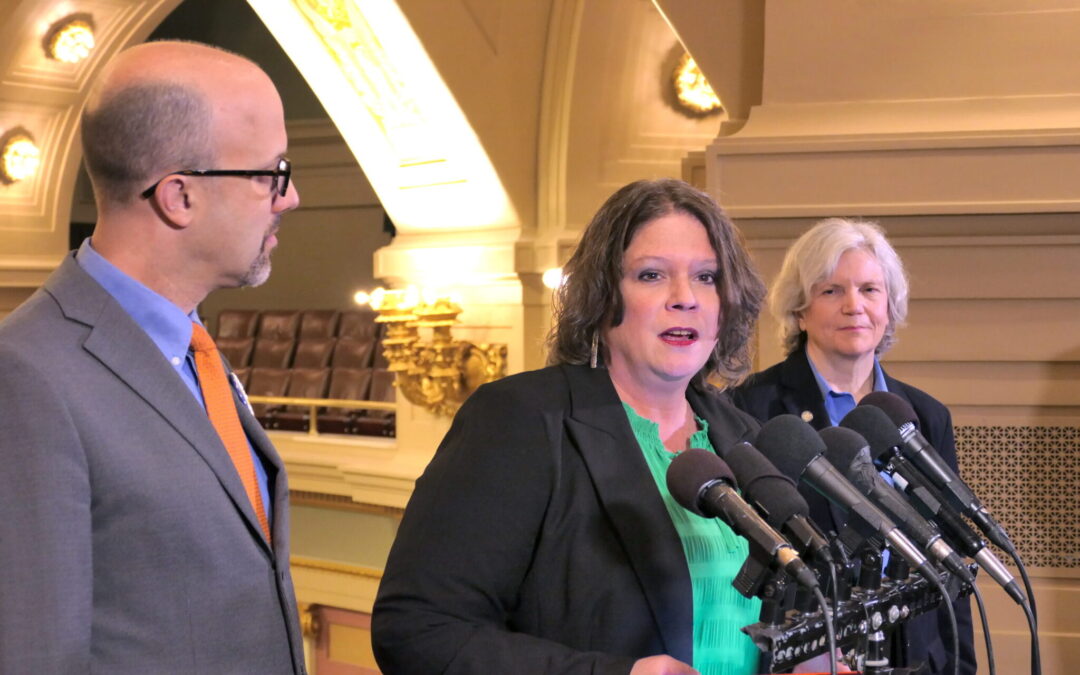House Democratic-Farmer-Labor members on Thursday passed a bill that would provide over $2.2 billion in additional funding for Minnesota schools.
The bill would increase education spending by 10% to $23 billion — about 30% of the proposed $72 billion state budget for fiscal years 2024-2025. The bill’s advocates say the massive education budget is necessary to implement a slew of policies that will lessen disparities among students, increase test scores, attract diverse school staff and make Minnesota schools some of the best in the nation. The bill passed the House 70-60, with Republicans in dissent.
The legislation’s Senate companion — which has some differences — still needs approval from the upper chamber. The two DFL-majority chambers will need to work out differences in a conference committee, a joint session of House and Senate members, who would draft a final version with provisions from both chambers.
The bill would significantly increase school funding, with a special emphasis on special education, English language learner students, and school support staff like counselors and school social workers.
Hopkins Democratic Rep. Cheryl Youakim, chief author of the House bill and chair of the Education Finance Committee, said the Legislature will make a historic investment in education.
“We have had 20 years of underinvestment. We’re not going to be able to turn that around in one biennium, but this bill takes a really good crack at it,” Youakim said at a press conference before the House floor vote.
Here are some of the provisions in the House bill:
Increase in funding formula
The general education funding formula, which determines how much money goes to each district, would go up 4% in fiscal year 2024 and then by 2% in fiscal year 2025. After that, the formula would increase annually with inflation.
The funding formula is the primary source of funds for Minnesota schools and is distributed to districts based on the number of students, as well as the district’s student profile. (A district with more students in poverty receives more money, for instance.) Districts would receive $7,138 per student in fiscal year 2024 under the bill, which is up from the current $6,863 per student.
The bill would increase funding formula spending by $704 million for fiscal years 2024-2025 and by $1.3 billion the following two years.
The provision puts a 3% cap on the amount the formula can increase annually. House Democrats throughout the session have been mulling how much the education formula should increase. At one point Rep. Zack Stephenson, DFL-Coon Rapids, authored a bill that would have boosted the formula by 20%. This would have increased per-student spending from $6,863 to $8,236.
The House and Senate appear to be at odds over the formula right now, with the Senate proposing a 4% increase in fiscal year 2024 and a 5% increase in fiscal year 2025. The Senate education bill, however, does not tie funding to inflation in the following years.
Reducing ‘cross subsidies’
School districts for years asked for more funding to reduce their special education and English learner “cross subsidy” — a term used around the Capitol referring to school districts paying for special education and English learner programs from their general funds because of inadequate state and federal funding.
This often causes districts to ask residents in their local area for property tax levies to help defray the rising cost of special education and English learner costs.
The House education package proposes increasing the state’s share of special education funding for school districts from 6% to 48% — costing Minnesota about $730 million in fiscal years 2024-2025. Many districts asked for a full elimination of the cross subsidy.
Rep. Dan Wolgamott, DFL-St.Cloud, this session introduced a bill to increase the state’s share of special education cross subsidy funding to 100%, but the bill stalled.
The bill also proposes eliminating the cross subsidy on English learner programs by 2027, with state funding increasing annually and costing over $272 million in fiscal years 2026-2027.
A slew of policy changes
In addition to increasing spending, House Democrats are proposing multiple policy changes, including a mandate for collective bargaining with teachers unions to include class sizes, student testing and personnel-student ratio.
In other words, districts would have to negotiate with teachers over key policies — with significant fiscal implications.
The bill also expands unemployment benefits to non-licensed staff; requires schools to provide menstrual products to students in grades 4 through 12; and bans schools from expelling students in kindergarten through third grade, unless there are extenuating circumstances.
“This bill puts mandates over students,” said Rep. Peggy Scott, R-Andover, on the House floor Thursday. “With these mandates and expanding bureaucracy, many districts will actually have more difficult budgets than they are experiencing now.”
The education bill has drawn criticism from some school administrators who worry the additional requirements — coupled with the paid family medical leave schools would have to provide if Legislature passes it this session in which schools would to contribute 0.35% of payroll to — would eat up the majority of their funding.
At a meeting last month, which was first reported by the St. Paul Pioneer Press, Stillwater Superintendent Michael Funk told his school board that he was disappointed with the Legislature’s education bills.
“I think this is potentially one of the most damaging sessions I’ve seen since I’ve been a superintendent,” Funk said.
Youakim, the bill’s chief author, disputed that the bill has unfunded mandates, noting the increases in the general education funding formula.
The House was still debating the bill as of late Thursday afternoon.


Recent Comments